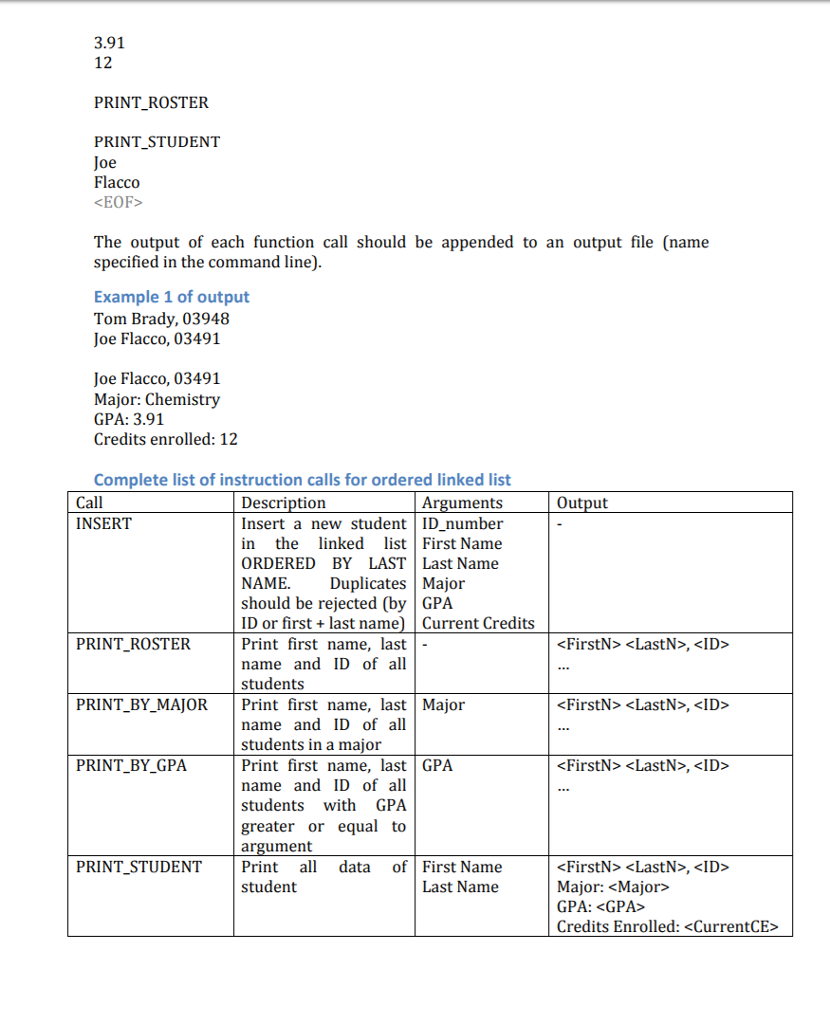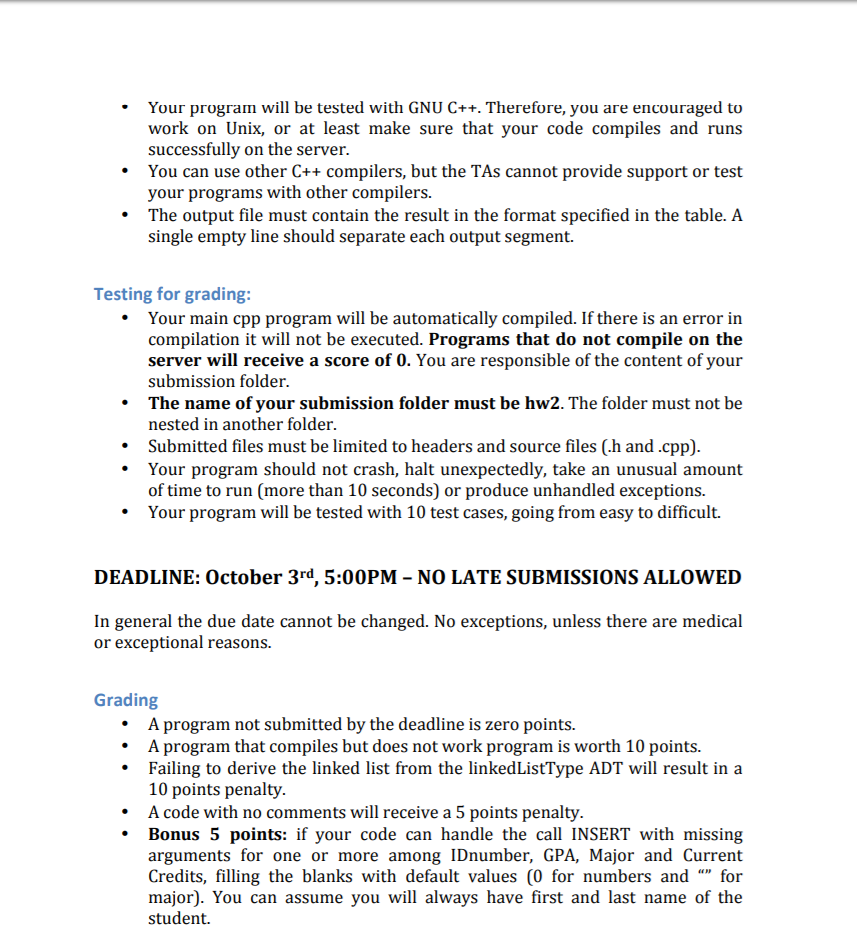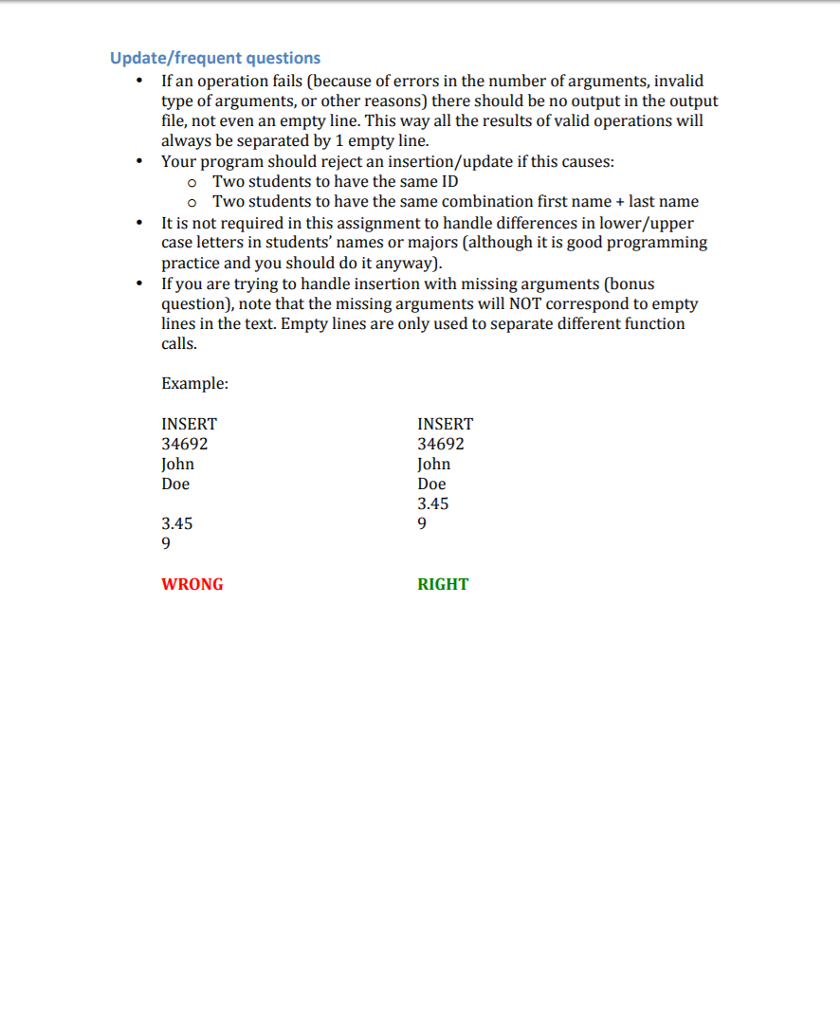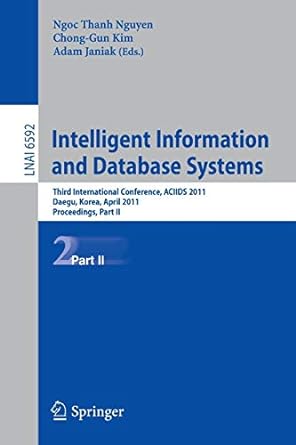Question
Data Strucutres: Linked lists homework The following abstract class defines the basic properties of a linked list as an ADT: //This class specifies the members
Data Strucutres: Linked lists homework





The following abstract class defines the basic properties of a linked list as an ADT:
//This class specifies the members to implement the basic
// properties of a linked list. This is an abstract class.
// We cannot instantiate an object of this class.
//***********************************************************
template
class linkedListType {
public:
const linkedListType& operator= (const linkedListType&);
//Overload the assignment operator.
void initializeList();
//Initialize the list to an empty state.
//Postcondition: first = NULL, last = NULL, count = 0;
bool isEmptyList() const;
//Function to determine whether the list is empty.
//Postcondition: Returns true if the list is empty, otherwise
// it returns false.
void print() const;
//Function to output the data contained in each node.
//Postcondition: none
int length() const;
//Function to return the number of nodes in the list.
//Postcondition: The value of count is returned.
void destroyList();
//Function to delete all the nodes from the list.
//Postcondition: first = NULL, last = NULL, count = 0;
Type front() const;
//Function to return the first element of the list.
//Precondition: The list must exist and must not be empty.
//Postcondition: If the list is empty, the program terminates;
// otherwise, the first element of the list is returned.
Type back() const;
//Function to return the last element of the list.
//Precondition: The list must exist and must not be empty.
//Postcondition: If the list is empty, the program
// terminates; otherwise, the last
// element of the list is returned.
virtual bool search(const Type& searchItem) const = 0;
//Function to determine whether searchItem is in the list.
//Postcondition: Returns true if searchItem is in the list,
// otherwise the value false is returned.
virtual void insertFirst(const Type& newItem) = 0;
//Function to insert newItem at the beginning of the list.
//Postcondition: first points to the new list, newItem is inserted at the beginning of the list, last points to the last node in the list, and count is incremented by 1.
virtual void insertLast(const Type& newItem) = 0;
//Function to insert newItem at the end of the list.
//Postcondition: first points to the new list, newItem is
// inserted at the end of the list, last points to the
// last node in the list, and count is incremented by 1.
virtual void deleteNode(const Type& deleteItem) = 0;
//Function to delete deleteItem from the list.
//Postcondition: If found, the node containing deleteItem is deleted from the list. first points to the first node, last points to the last node of the updated list, and count is decremented by 1.
linkedListIterator begin();
//Function to return an iterator at the beginning of the
//linked list.
//Postcondition: Returns an iterator such that current is set to first.
linkedListIterator end();
//Function to return an iterator one element past the last element of the linked list.
//Postcondition: Returns an iterator such that current is set to NULL.
linkedListType();
//default constructor
//Initializes the list to an empty state.
//Postcondition: first = NULL, last = NULL, count = 0;
linkedListType(const linkedListType& otherList);
//copy constructor
~linkedListType();
//destructor
//Deletes all the nodes from the list.
//Postcondition: The list object is destroyed.
protected:
int count; //variable to store the number of list elements //
nodeType *first; //pointer to the first node of the list
nodeType *last; //pointer to the last node of the list
private:
void copyList(const linkedListType& otherList);
//Function to make a copy of otherList.
//Postcondition: A copy of otherList is created and assigned to this list. };
COSC2430: Programming and Data Structures University roster using linked lists Introduction In this homework, you will create a C++ program to manage the list of enrolled students in a university. The data of each student will be stored as nodes of an ordered linked list. You should be able to add and delete students from the list, and perform other operation on the stored data. Student information include: ID number (integer of 5 digits) First name Last name Major GPA (double, between 0 and 4) Current Credit Enrolled (integer, between 0 and 15) Input and Output The input is a single text file. Each file is divided in blocks that call different operations on the linked list, followed by the necessary arguments. The name used to declare the instruction to execute will be all in upper cases. Each new argument is in a new line of the file. Your program should go through the file and execute all the listed operations, and terminate when the end of file is reached. It is fair to assume that all calls will be in upper case letters and will always be separated by an empty line, even when the number of arguments is incorrect for the function call. The file terminates with new line and EOF. Example 1 of input INSERT 03948 Tom Brady Physics 3.40 12 INSERT 03491 oe Flacco Chemistry COSC2430: Programming and Data Structures University roster using linked lists Introduction In this homework, you will create a C++ program to manage the list of enrolled students in a university. The data of each student will be stored as nodes of an ordered linked list. You should be able to add and delete students from the list, and perform other operation on the stored data. Student information include: ID number (integer of 5 digits) First name Last name Major GPA (double, between 0 and 4) Current Credit Enrolled (integer, between 0 and 15) Input and Output The input is a single text file. Each file is divided in blocks that call different operations on the linked list, followed by the necessary arguments. The name used to declare the instruction to execute will be all in upper cases. Each new argument is in a new line of the file. Your program should go through the file and execute all the listed operations, and terminate when the end of file is reached. It is fair to assume that all calls will be in upper case letters and will always be separated by an empty line, even when the number of arguments is incorrect for the function call. The file terminates with new line and EOF. Example 1 of input INSERT 03948 Tom Brady Physics 3.40 12 INSERT 03491 oe Flacco ChemistryStep by Step Solution
There are 3 Steps involved in it
Step: 1

Get Instant Access to Expert-Tailored Solutions
See step-by-step solutions with expert insights and AI powered tools for academic success
Step: 2

Step: 3

Ace Your Homework with AI
Get the answers you need in no time with our AI-driven, step-by-step assistance
Get Started


